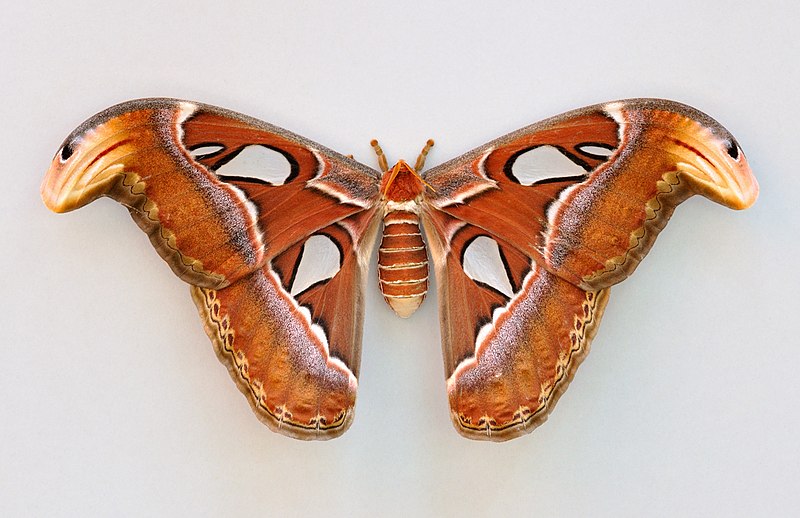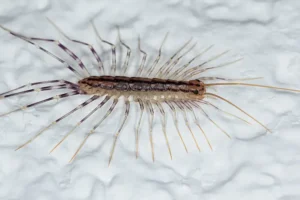
Living in the United States, what do you think when you see a moth outside your home? Maybe you admire its subtle coloring, or maybe you scowl and hope it doesn’t follow you back inside. Or it could be that don’t think anything at all. But imagine you step outside in the morning to find a massive, winged insect quietly perched on the side of your garage. The bug is wider than the palm of your hand and looks like nothing you’ve seen before. That’s exactly what happened to one man in Bellevue WA, and he quickly took a picture to send to his local entomologist. And as he did, he may have asked himself – what is this thing? Where did it come from, and what does it mean now that it’s here?
The Atlas Moth: An Overview
This behemoth is the Atlas moth. Its wings have a distinct design of orange and black, with wingtips made to mimic the head of a cobra. The caterpillars can grow up to an inch thick, and when it pupates the females can be up to twelve inches long! That doesn’t make it the largest of the giant moths, but with a wing surface area of 62 square inches, it’s certainly near the top of the list.
As caterpillars, they can grow up to four and a half inches in length before pupating. Once they reach adulthood, they don’t move much during the day, focused solely on mating in the few weeks they have to live. They don’t eat, aren’t poisonous and have no bite or stinger, but the designs on their wingtips allow them to mimic a cobra to scare away predators.
Atlas moths are native to the tropic and subtropic rainforests of South Asia. And yet, as of July 7th of this year, this polyphemus moth has shown up in the Pacific Northwest. How?
The Atlas Moth in the Pacific Northwest
How does a foot-long tropical moth find its way to the chilly treetops and mountains of Washington? The answer is still up for debate. There’s evidence of a nearby eBay retailer selling Atlas moth cocoons from Thailand for $60 a piece. The shop has since been closed down – as it should since Atlas moths are considered a federally quarantined pest in the United States. That means that it’s illegal to keep or sell them without a proper permit. This is more than needless bureaucratic red tape – it’s a very important guideline meant to keep from introducing a non-native invasive species into the country.
The grown Atlas moth found in Bellevue won’t do much damage. In fact, there’s a very real possibility that this specimen could be a one-off escapee and will eventually die off after a few weeks. If there is a growing population in the area, however, then that’s where things become a problem. It’s in its larval stage that Atlas moth has a tremendous appetite and will decimate growing fruit trees. When kept in captivity in another part of the world their diet is strictly monitored, but if left alone they can cause serious damage to crops across the area. That’s a major reason why experts are so concerned with monitoring their new presence in the United States.
What to Do If You See an Atlas Moth
At the moment the odds are low of finding an Atlas moth in Tennessee. But since our climate is closer to what this giant moth is used to, it doesn’t hurt to be on the lookout in case there is a population that attempts to migrate. It might be shocking at first to see an Atlas moth around your property, but if that time comes, all you need to do is send a picture and location to our local state plant health director. After that, you can leave it alone, as it’ll likely move somewhere else overnight.
At Russell’s Pest Control, we’re focused on pests more common to the Knoxville area, like pantry pests and bed bugs. These are the kind of pests that don’t make headlines when they infest a home – but that doesn’t mean they don’t deserve to be treated with experience and intention. Russell’s Pest Control offers pest extermination for properties across Knoxville. To learn more, contact us today!
What to Know About the Giant Atlas Moth in Knoxville TN
Serving East Tennessee since 1971




